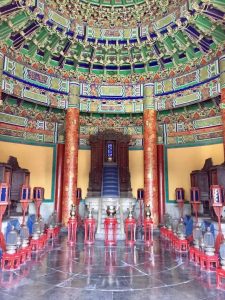 Longqing Gorge combines the charm of the southern landscape with the majesty of the northern landscape in China. The canyons are tortuous, the river is green, the cliffs on both sides are steep, and the caves, stalagmites and stone pillars are densely covered. It is known as the “Little Li River” of Beijing. In spring and summer, people come here to play and go out; in winter, there is a sea of ice lanterns.
Longqing Gorge combines the charm of the southern landscape with the majesty of the northern landscape in China. The canyons are tortuous, the river is green, the cliffs on both sides are steep, and the caves, stalagmites and stone pillars are densely covered. It is known as the “Little Li River” of Beijing. In spring and summer, people come here to play and go out; in winter, there is a sea of ice lanterns.
There is a reinforced concrete dam at the mouth of the Longqing Gorge. Inside the dam is a giant reservoir. When the water is full, it will flow out from the side hole spillway and flow straight down to form a spectacular waterfall.
You can take a scenic cruise, walk through the canyon, and feel the wonders of nature. For the Longqing Gorge in midsummer, the air is fresh and cool, and the average temperature is about 6 degrees lower than that of downtown Beijing, making it a great place for summer vacation.
Longqing Gorge has a cold winter climate and a long icing period. Taking advantage of this unique natural condition, the Longqing Gorge Scenic Area holds the ice lantern art festival every winter. Since 1987, the Longqing Gorge Ice Lantern Art Exhibition has become a traditional project of Beijing winter tourism. The Ice Lantern Exhibition is located under the Longqing Gorge Dam between the two mountains. The huge ice waterfall naturally hanging down from the dam is the beautiful background of the Ice Lantern Exhibition. During the Ice Lantern Exhibition, the valleys are dazzling with lights, and the various ice sculptures and snow sculptures are shining and spectacular.
 Longqing Gorge not only has beautiful natural scenery, but also has matching amusement facilities. You can take the elevator directly to the cruise ship dock near Baihua Cave. There is also a thrilling wing slide in the scenic area, which can slide from the mouth of Baihua Cave to Cuidao in the center of the lake at high speed. In the vicinity of Baihua Cave, you can take the ropeway directly to the Shenxianyuan in the middle of the mountain. In addition, there are rock climbing grounds, ice climbing bases, bungee jumping, and other thrilling projects in the scenic area. Extreme sports enthusiasts can also find your own happiness here.
Longqing Gorge not only has beautiful natural scenery, but also has matching amusement facilities. You can take the elevator directly to the cruise ship dock near Baihua Cave. There is also a thrilling wing slide in the scenic area, which can slide from the mouth of Baihua Cave to Cuidao in the center of the lake at high speed. In the vicinity of Baihua Cave, you can take the ropeway directly to the Shenxianyuan in the middle of the mountain. In addition, there are rock climbing grounds, ice climbing bases, bungee jumping, and other thrilling projects in the scenic area. Extreme sports enthusiasts can also find your own happiness here.
 Beijing Olympic Park is located in Chaoyang District, Beijing, at the northern end of the central axis of Beijing City, north to the south bank of Qinghe River, south to Beitucheng Road, east to Anli Road and Beichen East Road, west to Lincui Road and Beichen West Road. With an area of 11.59 square kilometers, it embodies the three major concepts of “Science, Technology, Green and Humanities”. It is a new urban area that combines office, commerce, hotel, culture, sports, conference, and residence.
Beijing Olympic Park is located in Chaoyang District, Beijing, at the northern end of the central axis of Beijing City, north to the south bank of Qinghe River, south to Beitucheng Road, east to Anli Road and Beichen East Road, west to Lincui Road and Beichen West Road. With an area of 11.59 square kilometers, it embodies the three major concepts of “Science, Technology, Green and Humanities”. It is a new urban area that combines office, commerce, hotel, culture, sports, conference, and residence. The Beijing Olympic Park was built specifically for the Beijing Olympic Games. It is the largest urban park in Beijing. It is currently a natural landscape tourist area for citizens and tourists to relax and explore. Take Metro Line 8 to Forest Park South Gate Station and Lin Cuiqiao Station and get off and walk.
The Beijing Olympic Park was built specifically for the Beijing Olympic Games. It is the largest urban park in Beijing. It is currently a natural landscape tourist area for citizens and tourists to relax and explore. Take Metro Line 8 to Forest Park South Gate Station and Lin Cuiqiao Station and get off and walk. Tiananmen Tower is located at the northern end of Tiananmen Square. It is a symbol of Beijing and China. It is also a must-see for every visitor to Beijing.
Tiananmen Tower is located at the northern end of Tiananmen Square. It is a symbol of Beijing and China. It is also a must-see for every visitor to Beijing. Special Notes:
Special Notes: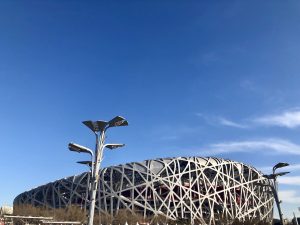 The appearance of the Birds Nest is already unique enough. Generally, tourists do not go inside to visit, as it is also very good to take pictures outside. There are many landscape lights for lighting around the square in the Birds Nest, which are made into the shape of a bird’s nest. The landscape lights of the Little Birds Nest consist of the foreground, and the Big Birds Nest National Stadium is regarded as the background, then you will find it very interesting to take photos.
The appearance of the Birds Nest is already unique enough. Generally, tourists do not go inside to visit, as it is also very good to take pictures outside. There are many landscape lights for lighting around the square in the Birds Nest, which are made into the shape of a bird’s nest. The landscape lights of the Little Birds Nest consist of the foreground, and the Big Birds Nest National Stadium is regarded as the background, then you will find it very interesting to take photos. Special Note
Special Note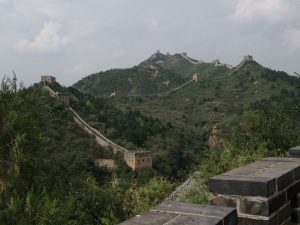 The climbing road of the Simatai Great Wall is relatively steep. It takes a certain amount of physical strength to go up the mountain road from the foot of the mountain to the enemy building. At the foot of the Simatai Great Wall, there are ropeways that can directly take you to reach the “East 8th Floor” and “East 5th Floor”. Tourists with limited physical strength can choose to ride the ropeways. The ropeway costs 90 yuan for one way and 160 yuan for round trip. If you go from the trail on foot, it takes about 45 minutes to go up. When the weather is hot, it is not recommended to climb the Great Wall on foot, as your body cannot stand the hot weather and you will feel it very tired. On the Simatai Great Wall, you will find that it pays a lot of attention to the night scene, so there are oil lamps and lighting equipment, making it a very beautiful angle! Looking at the Gubei Water Town under the mountain, you will feel it very beautiful. Although there is no light during the day, the angle is very good. This section of the Great Wall is very dangerous, but you will feel it very good to climb up the mountain. It is highly recommended everyone to feel it. The Simatai Great Wall is preserved well. It’s very great to take pictures! You can feel the ancient war environment here, and the horse road here is still very well preserved, which looks especially cool!
The climbing road of the Simatai Great Wall is relatively steep. It takes a certain amount of physical strength to go up the mountain road from the foot of the mountain to the enemy building. At the foot of the Simatai Great Wall, there are ropeways that can directly take you to reach the “East 8th Floor” and “East 5th Floor”. Tourists with limited physical strength can choose to ride the ropeways. The ropeway costs 90 yuan for one way and 160 yuan for round trip. If you go from the trail on foot, it takes about 45 minutes to go up. When the weather is hot, it is not recommended to climb the Great Wall on foot, as your body cannot stand the hot weather and you will feel it very tired. On the Simatai Great Wall, you will find that it pays a lot of attention to the night scene, so there are oil lamps and lighting equipment, making it a very beautiful angle! Looking at the Gubei Water Town under the mountain, you will feel it very beautiful. Although there is no light during the day, the angle is very good. This section of the Great Wall is very dangerous, but you will feel it very good to climb up the mountain. It is highly recommended everyone to feel it. The Simatai Great Wall is preserved well. It’s very great to take pictures! You can feel the ancient war environment here, and the horse road here is still very well preserved, which looks especially cool!
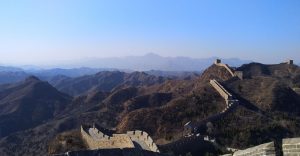 The Jinshanling Great Wall is not very far from Beijing. Starting from Beijing, it takes less than two hours along the Jingcheng Expressway to go to the Jinshanling Great Wall Scenic Spot in Chengde. Ticket of the Jinshanling Great is 65 yuan/person, and the ropeway ticket is bought in the main entrance of the scenic spot. The ropeway is located in the middle section of the Jinshanling Great Wall. It can only go through halfway. If there is no problem with your physical strength, don’t take the cableway. The road to the mountain is not long. After going up the mountain, you can enter the Great Wall from the General Building and go east to the East Gate of the East Five-Eye Building. The whole journey takes four hours. After more than twenty floors, you will feel the second half of the road more challenging and the damage more serious. Jinshanling Great Wall is covered with green trees and grass, and the Great Wall is full of windings on the ridge. The view is very good and the scenery is spectacular and beautiful. Perhaps it is because it’s a little far from Beijing, there are very few tourists, and it is very funny to play the Jinshanling Great Wall.
The Jinshanling Great Wall is not very far from Beijing. Starting from Beijing, it takes less than two hours along the Jingcheng Expressway to go to the Jinshanling Great Wall Scenic Spot in Chengde. Ticket of the Jinshanling Great is 65 yuan/person, and the ropeway ticket is bought in the main entrance of the scenic spot. The ropeway is located in the middle section of the Jinshanling Great Wall. It can only go through halfway. If there is no problem with your physical strength, don’t take the cableway. The road to the mountain is not long. After going up the mountain, you can enter the Great Wall from the General Building and go east to the East Gate of the East Five-Eye Building. The whole journey takes four hours. After more than twenty floors, you will feel the second half of the road more challenging and the damage more serious. Jinshanling Great Wall is covered with green trees and grass, and the Great Wall is full of windings on the ridge. The view is very good and the scenery is spectacular and beautiful. Perhaps it is because it’s a little far from Beijing, there are very few tourists, and it is very funny to play the Jinshanling Great Wall.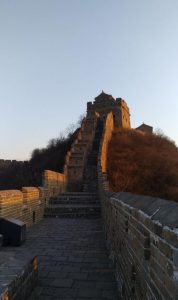 Jinshanling Great Wall is very captivating. In the eyes of photographers, its beauty far exceeds Badaling Great Wall, and there are not many tourists here. The beautiful Jinshanling Great Wall reflects the afterglow of the setting sun, and the scenery is absolutely touching. The most elite part of Jinshanling Great Wall is the section from the West Five-Eyes Building to the East Five-Eyes Building. There will be many enemy buildings along the way with all kinds of forms. Some are well preserved, elaborately constructed, but some are dilapidated, and the walls are broken. But they are all imprints of history. And you should prepare at least one day in the Jinshanling Great Wall. It is recommended to go there in the fall season.
Jinshanling Great Wall is very captivating. In the eyes of photographers, its beauty far exceeds Badaling Great Wall, and there are not many tourists here. The beautiful Jinshanling Great Wall reflects the afterglow of the setting sun, and the scenery is absolutely touching. The most elite part of Jinshanling Great Wall is the section from the West Five-Eyes Building to the East Five-Eyes Building. There will be many enemy buildings along the way with all kinds of forms. Some are well preserved, elaborately constructed, but some are dilapidated, and the walls are broken. But they are all imprints of history. And you should prepare at least one day in the Jinshanling Great Wall. It is recommended to go there in the fall season.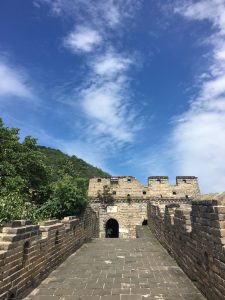 The Mutianyu Great Wall is located in the Huairou District of Beijing. The Mutianyu Great Wall is connected to the Juyongguan of Beijing Changping in the west and the Gubeikou of Beijing Miyun in the east. It is always a battleground for the military because of the danger of the terrain, enjoying the reputation of “the unique beautiful Great Wall among all the Great Walls”. In general, there are fewer tourists than the Badaling Great Wall, so your mood will be much better when touring here, but the scenery is inferior to the Jinshanling Great Wall. If you want to take a good photo, you still have to go to Jinshanling, but the distance will be far away. If your time is tight, it is not bad to go to Mutianyu to have a visit.
The Mutianyu Great Wall is located in the Huairou District of Beijing. The Mutianyu Great Wall is connected to the Juyongguan of Beijing Changping in the west and the Gubeikou of Beijing Miyun in the east. It is always a battleground for the military because of the danger of the terrain, enjoying the reputation of “the unique beautiful Great Wall among all the Great Walls”. In general, there are fewer tourists than the Badaling Great Wall, so your mood will be much better when touring here, but the scenery is inferior to the Jinshanling Great Wall. If you want to take a good photo, you still have to go to Jinshanling, but the distance will be far away. If your time is tight, it is not bad to go to Mutianyu to have a visit.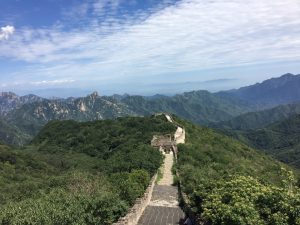
 The simple alley has not been transformed and is the most authentic face. There are a lot of famous Hutongs in Beijing, such as Maoer Hutong, Bean Hutong, South Downs Hutong, and so on. While shopping, you can also just pass through the alley and go to Shichahai. There is a bright red five-star red flag in the hutong. This is the atmosphere of the festival. This is the feeling of the country and the family. There are many stalls in the hutong that sell candied haws. Come to Beijing, and the candied haws should also be tasted.
The simple alley has not been transformed and is the most authentic face. There are a lot of famous Hutongs in Beijing, such as Maoer Hutong, Bean Hutong, South Downs Hutong, and so on. While shopping, you can also just pass through the alley and go to Shichahai. There is a bright red five-star red flag in the hutong. This is the atmosphere of the festival. This is the feeling of the country and the family. There are many stalls in the hutong that sell candied haws. Come to Beijing, and the candied haws should also be tasted.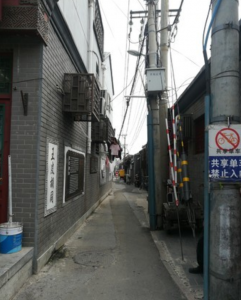
 Tiananmen Square will be cleared every night. There will be armed police patrolling around the square. There are a lot of people gathering at Tiananmen Square at two or three o’clock in the morning to wait to see the national flag rising. After the security check, the team waiting outside the west gate of the National Museum or outside the east gate of the Great Hall of the People has been lined up. When you watch the flag rising, don’t wander around at this time, and go to the queue will be your choice.
Tiananmen Square will be cleared every night. There will be armed police patrolling around the square. There are a lot of people gathering at Tiananmen Square at two or three o’clock in the morning to wait to see the national flag rising. After the security check, the team waiting outside the west gate of the National Museum or outside the east gate of the Great Hall of the People has been lined up. When you watch the flag rising, don’t wander around at this time, and go to the queue will be your choice. If you are slow, then you can just see the crowds around you, because the people who go to see the national flag rising every day are really a lot, you can’t see the heroic flag, you may not hear the uniform stepping sound too.
If you are slow, then you can just see the crowds around you, because the people who go to see the national flag rising every day are really a lot, you can’t see the heroic flag, you may not hear the uniform stepping sound too.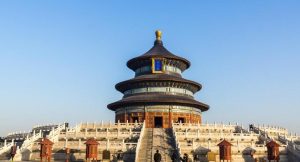 The Temple of Heaven is a special altar for the Emperor of the Ming and Qing Dynasties to worship the heavens, ask for rain and pray for the harvest. The north of the altar is round and the south is square, meaning ” round heaven and square earth.” It is divided into two parts: the inner altar and the outer altar. The northern part of the inner altar is the “altar praying for grain”. It is the place where the emperor held the grain praying Grand Ceremony in the spring, mainly including the Hall of Prayer for Good Harvests and the Emperor Hall. In the south, it is Circular Mound Altar, and it is the place where the emperor worships the heavens on the winter solstice. It mainly includes the Circular Mound Altar, the Imperial Heavenly Vault and god kitchen and the temple and the animal sacrificial pavilion.
The Temple of Heaven is a special altar for the Emperor of the Ming and Qing Dynasties to worship the heavens, ask for rain and pray for the harvest. The north of the altar is round and the south is square, meaning ” round heaven and square earth.” It is divided into two parts: the inner altar and the outer altar. The northern part of the inner altar is the “altar praying for grain”. It is the place where the emperor held the grain praying Grand Ceremony in the spring, mainly including the Hall of Prayer for Good Harvests and the Emperor Hall. In the south, it is Circular Mound Altar, and it is the place where the emperor worships the heavens on the winter solstice. It mainly includes the Circular Mound Altar, the Imperial Heavenly Vault and god kitchen and the temple and the animal sacrificial pavilion.